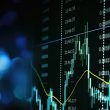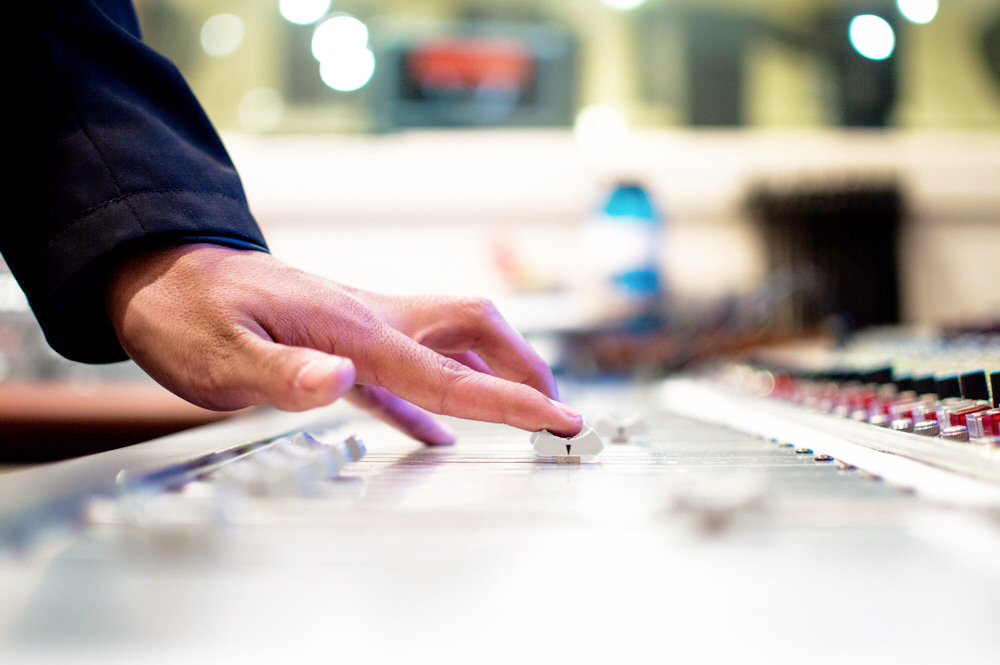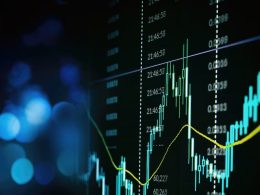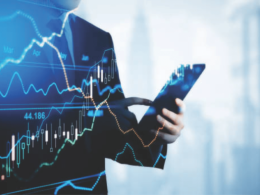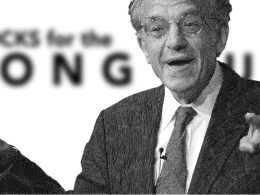by Jeffrey Kleintop, Senior Vice President and Chief Global Investment Strategist, Charles Schwab & Co., Inc.
Key Points
- In our 2020 Global Market Outlook, we cited many indicators pointing to heightened risk of a recession; now we highlight increasing signs of a recovery from one.
- Investor caution may still be warranted. Stocks have priced in a recovery during the second quarter, leaving the potential for the pace or success of the recovery to disappoint.
- New cycles usually come with new market leadership. New market leadership by sector, style and geography could emerge in the second half of the year, catching some investors by surprise.
The recession in the first half…
If our tone at the end of last year was gloomy, it wasn’t gloomy enough. In the 2020 Outlook, published last December, we cautioned that the global economy was vulnerable to a recession. Some signs of vulnerability cited included:
- The ominous fall in the leading indicator for the world economy (OECD Composite Leading Indicator) to 99.1 since “a drop below 99 seems to happen right around the start of a global recession.”
- The weakness in manufacturing suggested “economies that are most dependent upon manufacturing may be the most vulnerable to a recession.”
- Business leaders seemed to be bracing for recession since “Most CFOs surveyed in the latest Duke CFO Global Business Outlook poll see a recession starting sometime next year.”
- The consumer was vulnerable because “a sudden rise in layoffs could undermine the current confidence, now at levels that preceded prior recessions.”
In fact, most major economies were teetering on the edge of a recession before the lockdowns tied to COVID-19 hit. Five of the major Group of Seven (G7) countries ended the fourth quarter of last year with negative or zero GDP growth: Japan (-1.9%), Germany (-0.1%), France (-0.1%), Italy (-0.2%), and the United Kingdom (0.0%). The economic lockdowns in response to the virus magnified these economic vulnerabilities, and led to a deep global recession, as you can see reflected in the chart below. The composite leading indicator has plunged well below 99.
Global economic indicator broke down through important threshold
Source: Charles Schwab, Organization for Economic Co-operation and Development, as of 6/7/2020.
Unsurprisingly, those countries that implemented the strictest lockdowns suffered the deepest downturns in their economies. We can see this by looking at the Oxford Stringency Index, a measure of how severe the lockdowns were by country, and the purchasing managers’ indexes, a widely-watched measure of economic trends in the manufacturing and service sectors, the drop in economic activity was greater among those major countries that imposed the most stringent lockdowns from January to April, as you can see in the chart below.
Severity of economic lockdowns and downturns from January to April
Source: Charles Schwab, Oxford University Blavatnik School of Government, Bloomberg data as of 6/7/2020.
…may give way to a second half recovery
Fortunately, the same countries that saw the deepest downturns also saw the most rapid rebounds in May when the lockdowns began to ease—though most have more to go to fully recover.
Severity of economic lockdowns and rebounds from April to May
Source: Charles Schwab, Oxford University Blavatnik School of Government, Bloomberg data as of 6/7/2020.
There are increasing signs of recovery in the real-time data, Re-openings are turning into recoveries. Monthly and quarterly data points can later be used to validate the higher frequency daily and weekly indicators market movements seem to be closely tied to. Specifically, we are looking at weekly data on six key elements of a recovery:
- Rush hour commuting measuring how quickly people are returning to work.
- Air pollution levels as an indication of manufacturing output.
- Retail activity, to capture how quickly people are returning to brick and mortar stores.
- Weekend box office receipts measuring the populations’ willingness to come together in groups for entertainment.
- Electricity use indicating the restart of service and manufacturing businesses.
- New virus cases, should a dramatic uptick require another shutdown.
All this data is compiled from independent sources, not the governments themselves. For example, China’s air pollution, a useful proxy for manufacturing activity, is tracked by the U.S. consulate in Shanghai using a test from the EPA (U.S. Environmental Protection Agency). These six indicators were selected to capture the most important signals for the market on how fast jobs, the economy and earnings may recover. They are published for a number of major countries every week, and have shown some countries have already rebounded to levels that preceded the COVID-19 lockdowns (ex. China).
China real time recovery heatmap as of June 5, 2020
Source: Charles Schwab, World Health Organization, United Nations, China Passenger Car Association, Bloomberg, Box Office MoJo, Macrobond data as of 6/5/2020. Unavailable data noted as #N/A.
Other countries have only recently started to see signs of improvement (ex. France).
France real time recovery heatmap as of June 5, 2020
Source: Charles Schwab, World Health Organization, United Nations, TomTom.com, Bloomberg, Box Office MoJo data as of 6/5/2020.
How will the economy recover if so many jobs have been lost? On a monthly basis there is simply no consistent relationship between the change in jobs and the change in the stock market. That isn’t because Wall Street doesn’t care about Main Street. It’s because history shows us that the stock market tends to lead the trend in jobs. For example, it wasn’t until February 2010 that the U.S. economy finally stopped shedding jobs after the Great Financial Crisis—even though stocks bottomed about a year earlier. Most economists expect that we may have seen the peak for unemployment as jobs return with the business re-openings.
As a result of any economic downturn, there will be business failures and job losses that aren’t temporary. Government and central bank stimulus is intended to be only a support for businesses as the economy slowly reopens, not a life preserver. Yet, the amount of global stimulus is massive, many times the size of the stimulus applied in the aftermath of the Great Financial Crisis in 2008-09, and summing to 28% of world GDP. This is a substantial support for businesses and the labor market.
Massive global economic stimulus
Source: Charles Schwab, official policy announcements from start of February through June 6, 2020.
With programs expanding weekly, the totals get larger and larger. For example, the Eurozone’s totals were lifted again last week by Germany’s new fiscal package (equivalent to 2% of Eurozone GDP) and the ECB’s addition to their stimulus program (comparable to 5% of Eurozone GDP) on top of the prior week’s European Commission stimulus (which amounted to 6% of Eurozone GDP). That’s a total increase in stimulus by 13% of GDP in just two weeks for the world’s second largest economy.
Investor caution may be warranted
While an economic recovery is underway, some investor caution in the second half of 2020 may be warranted. Global stocks as represented by the MSCI AC World Index have already recovered most of their losses during the second quarter. The pace or success of the recovery may potentially disappoint investors expecting a rapid turnaround.
In the past, cyclicals have typically led the market higher during market rebounds from a bear market and recession. By comparing the relative performance of MSCI World Cyclical and Defensive Indexes, we may observe which group of stocks is leading the market rebound. As you can see in the chart below, the current market rebound diverged from the last two stock market post-recession recoveries, when cyclical stocks (those more sensitive to the pace of economic growth) outpaced defensive stocks (those less sensitive to the economy) by a wide margin. Until the past couple of weeks, defensive stocks had been leading the stock market rebound, suggesting market participants were pricing in a long, slow recovery. Recently, cyclicals have started to outperform. This may suggest investors’ expectations have recently changed to embrace a brighter economic outlook and a more rapid economic recovery.
Cyclical leadership finally beginning to emerge after lagging past recoveries
Source: Charles Schwab, Factset data as of 6/5/2020. Past performance is no guarantee of future results.
This rotation to cyclicals and corresponding rally of the past few weeks may pose a risk to stock prices. If the recovery encounters a setback, or slows significantly from the initial bounce, investors may be disappointed and stocks could give back gains. Economic data in the coming weeks may continue to support the market, but potential risks to the market’s rising expectation of a rapid recovery include
- A slowdown in the pace of recovery as some restrictions linger, evidenced by the still stringent lockdowns in many major countries.
- A second virus wave resulting in another official lockdown or an unofficial behavior shift, where people no longer feel safe to leaving their homes.
- A return to the U.S.-China trade war as rhetoric spills over, undermining the hard won Phase One trade deal from mid-January.
- Ongoing civil unrest may weigh on the confidence of consumers and their spending, the largest driver of the economy.
- An above-average summer hurricane/typhoon season (along with other natural disasters) that could damage coastal areas, and slow their recovery.
- There are likely plenty of additional concerns besides those listed above. The start of new economic cycles are usually vulnerable and subject to risks.
New economic cycles also tend to bring new market leadership. Leadership by style (growth and value) and geography (U.S. and international) tend to switch places at the start of a new cycle, as we discussed in this commentary: What’s Wrong With the Rebound?. The recent rotation into cyclicals has started to lift value and international stocks relative to growth and U.S. stocks—due to their greater exposure to cyclical stocks—and provided fresh leadership to fuel the rebound. If sustained, this new market leadership by sector, style and geography in the second half of the year may catch some investors by surprise after the economic and market cycle of the past 12 years favored technology, growth and U.S. stocks, suggesting portfolio rebalancing may be in order.
Copyright © Charles Schwab & Co., Inc.


